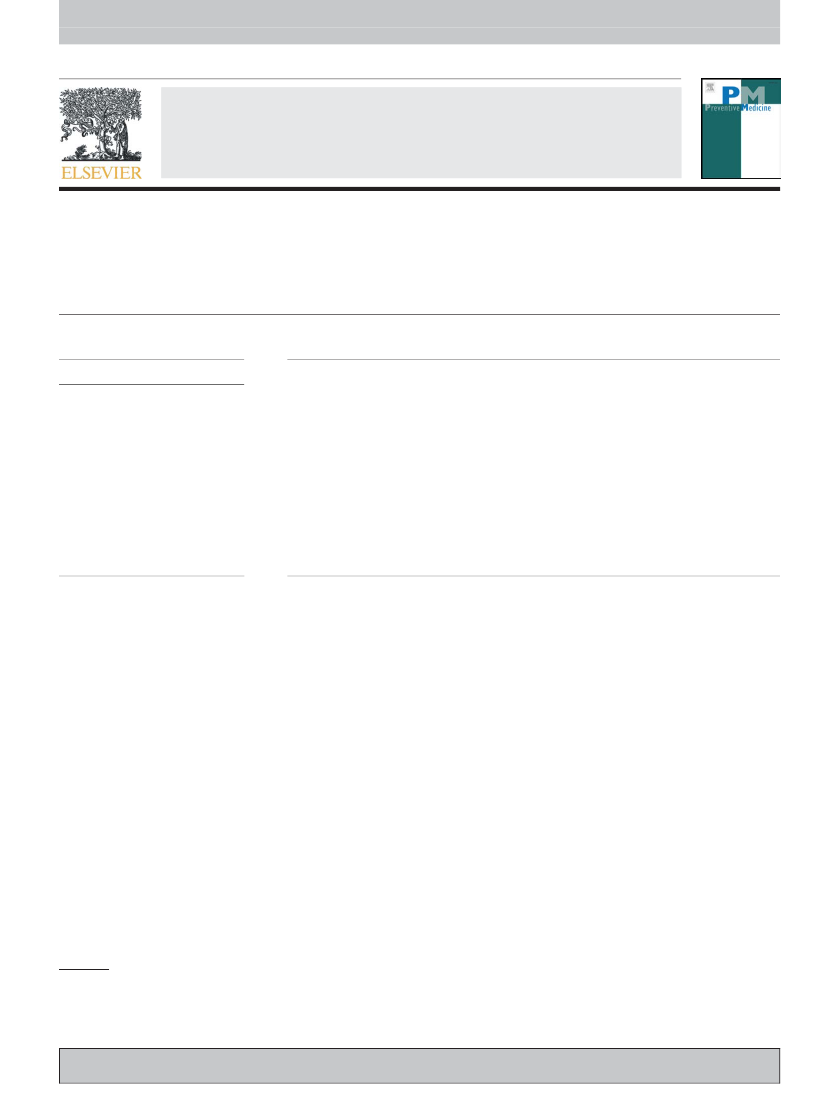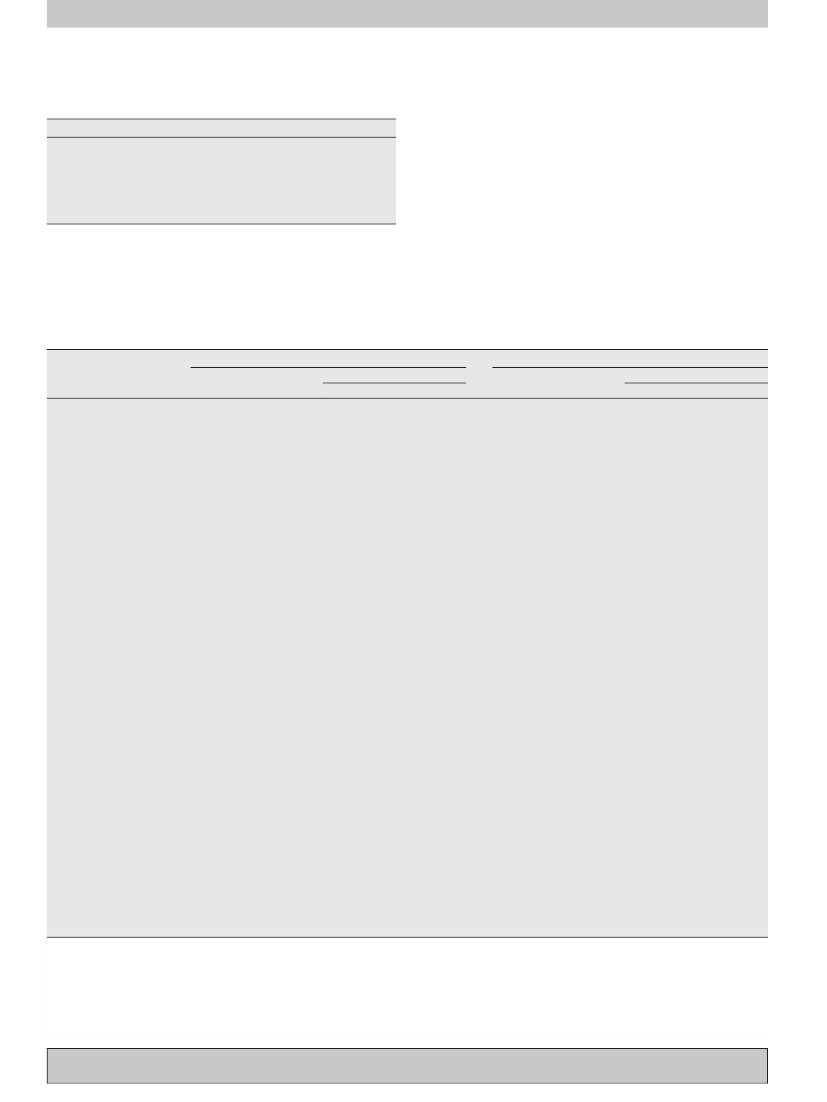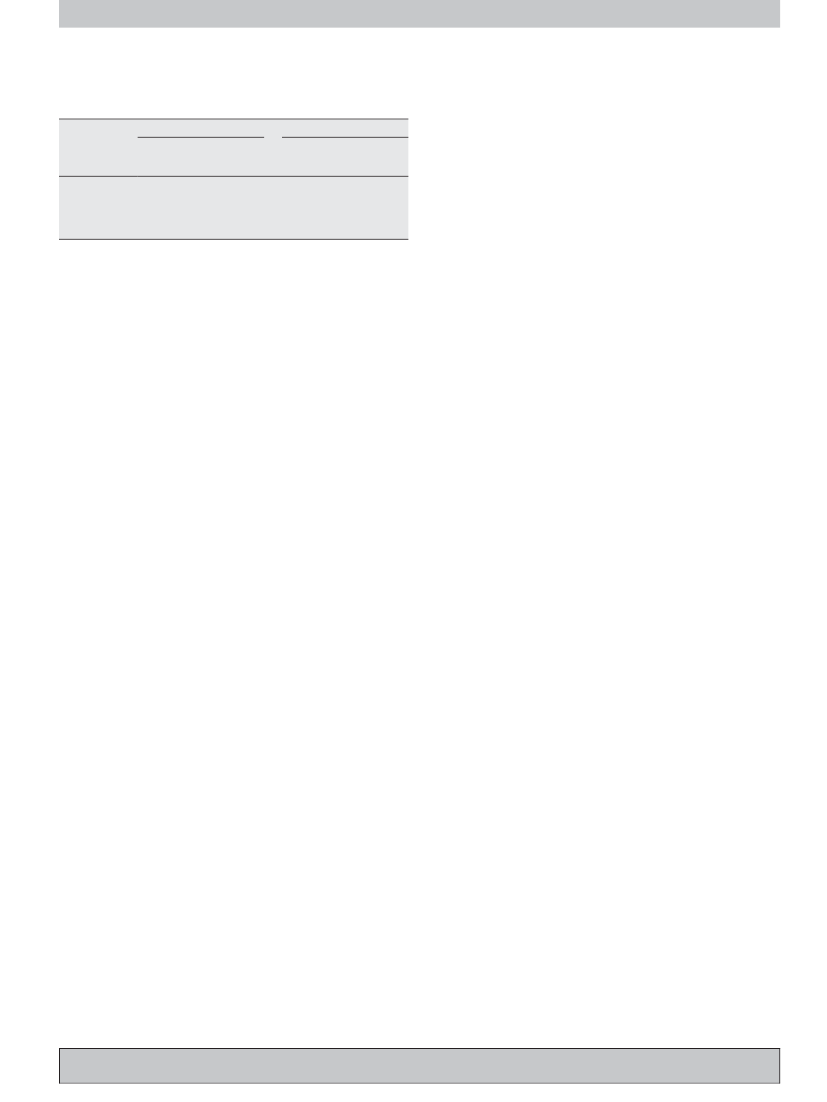Sundheds- og Forebyggelsesudvalget 2013-14
L 163 Bilag 4
Offentligt
ARTICLE IN PRESSPreventive Medicine xxx (2009) xxx–xxx
YPMED-02521; No. of pages: 3; 4C:
Contents lists available atScienceDirect
Preventive Medicinej o u r n a l h o m e p a g e : w w w. e l s e v i e r. c o m / l o c a t e / y p m e d
Sunbed use in the Danish population in 2007: A cross-sectional studyBrian Køster⁎, Camilla Thorgaard, Inge Haunstrup Clemmensen, Anja PhilipDanish Cancer Society, Department of Prevention and Documentation, Strandboulevarden 49, DK-2100, Denmark
a r t i c l eAvailable online xxxxKeywords:SunbedSun protectionPreventionSkin cancer
i n f o
a b s t r a c tBackground.In Denmark, the incidence of all types of skin cancer, including malignant melanoma, hasbeen increasing since the 1960s. Exposure to ultraviolet (UV) radiation is the main preventable cause of skincancer. We describe current sunbed use in the Danish population.Methods.A population-based sample of 3437 persons aged 15–59 years completed a questionnaire thatincluded items on artificial and natural exposure to UV. We examined relations between sunbed use, outdoortanning, knowledge about associated health risks and demographic factors with logistic regression analysis.Results.Within the past 12 months, 29% of all Danes aged 15–59 had used a sunbed, including 59%females aged 15–19, even though knowledge about the relation between exposure to UV and cancer wasmore frequent in this group. A larger proportion of persons aged 15–18 hadfirstused a sunbed before the ageof 14 than older groups. Single males, frequent outdoor sunbathers, persons who experienced sunburns andless educated persons were more likely to use sunbeds.Conclusions.Future campaigns to reduce the Danes sunbed use should target initiation by young peopleand the high prevalence among them. The results suggest a legislative solution, with a minimum age of18 years for indoor tanning.� 2009 Elsevier Inc. All rights reserved.
IntroductionThe incidence of melanoma (world standardized incidence rate per100 000) for men and women in Denmark increased from 1.4 and 1.9in 1949–53 to 12.6 and 15.2 in 1999–2003 (Engholmet al., 2008),respectively. Apart from Australia (38.5/28.9) and New Zealand (34.8/31.4) (1998–2002) (Curadoet al., 2007),the Scandinavian countrieshave some of the highest incidences of melanoma in the world. Non-melanoma (basal cell carcinoma and squamous cell carcinoma) is themost frequent cancer among Danes 68.9/64.3 (1999–2003) (Engholmet al., 2008).Exposure to ultraviolet (UV) radiation is a risk factor for skincancers of all types, including malignant melanoma. The main sourceof UV radiation is the sun, but artificial light from sunbeds (solariums,sunlamps) also contains UV radiation. A recent meta-analysis showedan increased risk for melanoma among personsfirstexposed tosunbeds before 30 years of age, with a summary relative risk estimateof 1.75 (1.35–2.26) (Greenet al., 2006).In 1994, 35% of Danes reportedsunbed use within the past 2 years, but by 2004 the proportion hadincreased to 50% (www.cancer.dk/skrunedforsolen/presserum/2007/Undersoegelser.htm).
We studied current sunbed use in a population-based sample ofthe Danish population (n = 4303) collected before the start of a 10-yearnational sun protection campaign.MethodsSample and questionnaireThis study was based on a‘sunsurvey’ conducted during2 weeks in March 2007, with a sample of 4303 respondents aged15+. The 75-item questionnaire included questions about exposureto artificial and natural UV, knowledge about UV exposure, skintype and sunburn. Data were collected through web and telephoneinterviews. A sample was drawn from a web panel of approxi-mately 30 000 persons recruited by random-digit dialing. From thesample we collected 3500 web interviews (30% response rate). Asupplementary group of respondents to match the Danish popula-tion by age, gender and region was then recruited from a list oftelephone numbers provided by Statistics Denmark. Trainedinterviewers collected 803 telephone interviews (24% responserate, 51% not reached within 6 attempts, 17% refused, 5% wrongnumber and 2% not available in sampling period). We excluded agegroup 60+ from the analysis due to a biased distribution in this agegroup. Thefinalanalysis included 1955 female and 1482 malerespondents aged 15–59. Skin types were determined from self-assessed tan and sunburn reactions according to Fitzpatrick(Fitzpatrick,1988).Self-reported height and weight facilitated
⁎Corresponding author.E-mail addresses:[email protected], [email protected](B. Køster).0091-7435/$–see front matter � 2009 Elsevier Inc. All rights reserved.doi:10.1016/j.ypmed.2008.12.012
Please cite this article as: Køster, B., et al., Sunbed use in the Danish population in 2007: A cross-sectional study, Prev. Med. (2009),doi:10.1016/j.ypmed.2008.12.012
ARTICLE IN PRESS2B. Køster et al. / Preventive Medicine xxx (2009) xxx–xxxTable 1Distribution of answers to the question“Howoften did you use sunbed within the last12 months?” in a‘sunsurvey’ in Denmark in March 2007Frequency of sunbed useMore than once a weekOnce a weekMore than once a monthOnce a monthLess than four times a yearNot within the last 12 monthsNevern409215725447011011323%1357143238Recent or non-recent userRecent users
(40%), Zealand (11%), Northern Jutland (10%), Central Jutland (21%)and Southern Denmark (17%).Statistical analysesRespondents were asked how often they had used a sunbed withinthe past 12 months. The answers were grouped into‘recentuser’ and‘non-recentuser’ (Table1).The homogeneity of sunbed use, attitudesand demographic variables between‘non-recentusers’ and‘recentusers’ was examined. The outcome‘recentsunbed user, yes/no’ wasanalysed by logistic regression. Factors with a statistically significantdifference in distribution were included as possible explanations.Crude and adjusted odds ratios and 95% confidence intervals werecalculated. For all tests,pvaluesb0.05were considered statistically
Non-recent users
calculation of BMI. The group consisted of 57% females and 43%males in the age groups 15–19 (11%), 20–29 (13%), 30–39 (25%),40–49 (25%) and 50–59 (26%) in the geographic regions Capital
Table 2Logistic regression analysis of factors affecting sunbed use stratified by gender in a‘sunsurvey’ in Denmark in March 2007CharacteristicFemalesnTotalAge (years)15–1920–2930–3940–4950–59Has a partnerNoYesBody mass indexb18.518.5–2525–30N30Level of educationPrimary schoolSecondary schoolSkilled/shortUniversitySkin typeI (never tan, always burn)II (seldom tan, burn some)III (tan some, seldom burn)IV (always tan, never burn)Outdoor sunbathing3NeverSeldomOnce a weekMore oftenSunburn4Never1–2 timesN3 timesSunbeds cause cancer5YesNoDo not knowSunbeds cause skin changes6YesNoDo not knowCancer in family7NoYes19551955199246509503498182433814861953881133472260193429853086723919422851060563341935300564605466193710487691201955172621208195518152411619191405514Recent sunbeduser (%)3659463733233634433833294839332129344238102941533042453557363650323732pb0.0012.5 (1.8–3.5)1.5 (1.1–2.0)1.0 (reference)0.8 (0.7–1.1)0.5 (0.4–0.7)p= 0.5631.1(0.8-1.4)1.0 (reference)p= 0.0081.3 (0.8–2.0)1.0 (reference)0.8 (0.6–1.0)0.7 (0.5–0.9)pb0.0013.6 (2.5–5.3)2.5 (1.7–3.5)1.9 (1.4–2.7)1.0 (reference)p= 0.0020.6 (0.4–0.8)0.7 (0.6–0.9)1.0 (reference)0.9 (0.4–1.8)pb0.0011.0 (reference)3.6 (2.4–5.4)6.0 (4.0–9.0)9.8 (6.5–14.8)pb0.0011.0 (reference)1.7 (1.4–2.1)1.9 (1.3–2.8)p= 0.1271.0 (reference)2.5 (1.0–5.9)1.0 (0.8–1.4)p= 0.2471.0 (reference)1.8 (0.8–4.1)0.8 (0.6–1.3)p= 0.0691.0 (reference)0.8 (0.7–1.0)pb0.0011.9 (1.0–3.6)1.3 (0.9–1.8)1.0 (reference)0.8 (0.6–1.0)0.5 (0.4–0.7)OR (95% CI)Crude1
MalesnAdjusted1482148216519835736240013712731098148021739559161147529046345626614561407375235614755064673261761467822583621482129123168148212564118514221131291Recent sunbeduser (%)1842402117929182425191230271611161827348213341172542225192237162318pb0.0012.7 (1.8–4.0)2.4 (1.6–3.5)1.0 (reference)0.8 (0.5–1.1)0.3 (0.2–0.5)pb0.0011.9 (1.4–2.6)1.0 (reference)p= 0.0020.9 (0.3–2.6)1.0 (reference)0.7 (0.5–0.9)0.4 (0.2–0.7)pb0.0013.7 (2.3–5.9)3.2 (2.1–5.0)1.6 (1.0–2.5)1.0 (reference)pb0.0010.5 (0.3–0.8)0.6 (0.4–0.8)1.0 (reference)1.4 (0.8–2.5)pb0.0011.0 (reference)3.3 (2.2–4.9)6.2 (4.1–9.3)8.7 (5.6–13.6)pb0.0011.0 (reference)1.6 (1.2–2.1)3.5 (2.0–5.9)p= 0.2321.0 (reference)1.9 (0.8–4.6)0.9 (0.6–1.3)p= 0.0151.0 (reference)2.1 (1.1–4.0)0.7 (0.5–1.0)p= 0.0451.0 (reference)0.7 (0.5–1.0)pb0.0011.1 (0.5–2.4)2.1 (1.4–3.2)1.0 (reference)0.6 (0.4–1.0)0.3 (0.2–0.5)p= 0.0371.5 (1.0–2.3)1.0 (reference)OR (95% CI)2CrudeAdjusted
pb0.0013.3 (1.9–5.6)2.5 (1.7–3.6)2.0 (1.4–2.9)1.0 (reference)
pb0.0011.0 (reference)4.0 (2.5–6.4)6.3 (4.0–10.1)9.0 (5.6–14.5)p= 0.0471.0 (reference)1.3 (1.1–1.7)1.1 (0.7–1.7)
pb0.0013.1 (1.6–5.8)3.2 (2.0–5.3)1.9 (1.1–3.2)1.0 (reference)pb0.0010.4 (0.2–0.7)0.5 (0.4–0.8)1.0 (reference)1.4 (0.7–3.0)pb0.0011.0 (reference)3.6 (2.2–5.7)5.9 (3.7–9.6)6.9 (4.0–11.9)p= 0.0301.0 (reference)1.4 (1.0–1.9)2.2 (1.1–4.4)
Odds ratios (ORs) and 95% confidence intervals (CI).P-valuesare test for variation between factor levels.1Female model adjusted for age, level of education, sunbathing and sunburn.2Male model additionally adjusted for skin type and civil status.3Recall last summer. On a day off, when the sun was shining, how often did you sunbathe, i.e. spent time in the sun to tan?4How many times have you had a sunburn within the past 12 months?5Do you think that sunbeds cause cancer of the skin?6Do you think that sunbeds cause skin changes, e.g. wrinkles, leathery skin?7Have any of your relatives ever been diagnosed with cancer?
Please cite this article as: Køster, B., et al., Sunbed use in the Danish population in 2007: A cross-sectional study, Prev. Med. (2009),doi:10.1016/j.ypmed.2008.12.012
ARTICLE IN PRESSB. Køster et al. / Preventive Medicine xxx (2009) xxx–xxxTable 3Distribution (%) of present age sunbed users (15–39) by age offirstsunbed use (age offirstuse≤18)in a‘sunsurvey’ in Denmark in March 2007Proportionof sunbedusers %Age atfirstuseb1414–1516–18TotalFemalePresentage15–19n= 13948475100Presentage20–29n= 195194239100Presentage30–39n= 334164331100MalePresentage15–19n= 73224929100Presentage20–29n= 107173251100Presentage30–39n= 133842501003
significant. The procedure logistic in SAS version 9.1 (SAS Institute,Cary, NC, USA) was used for the analyses.ResultsSunbed useTable 2shows the distribution of factors for recent sunbed use,stratified by gender. The proportion of sunbed users decreased withage. More single males used sunbeds than those with a partner, andmale sunbed use increased with skin type, whereas female sunbed usewas not influenced by having a partner or by their skin type. Therewere more sunbed users among persons with lower levels ofeducation, among highly frequent outdoor sunbathers, and amongpersons who experienced sunburn. Body mass index and knowledgeabout sunbeds and cancer were not significant factors in our adjustedmodel. In a logistic regression model of sunbed use by gender, age,skin type, level of education, cancer in the family, sunburn andoutdoor sunbathing behaviour, the crude and adjusted odds ratios forwomen relative to men were 2.0 (1.7–2.3) and 1.7 (1.4–2.1); (pb0.001).Age at start of sunbed useTable 3shows that younger sunbed users reported having startedusing sunbeds earlier than older groups (age offirstuse≤18), andfemales started using sunbeds earlier than males. Twice as manywomen as men reported having used sunbeds before the age of 14.Knowledge about the relation between skin changes or cancer andsunbedsThe survey showed that 17% more females aged 15–19 than malesknew that sunbeds cause changes to the skin (88% vs. 71%). Generally,both males and females knew that sunbeds can cause skin cancer, butthis knowledge decreased with age: 15–19 (93%), 20–29 (93%), 30–39(89%), 40–49 (86%) and 50–59 (84%). The proportion who answers“Donot know” increases with age. In all age groups about 2% thinks thatthere is no relation between skin cancer and sunbeds.DiscussionThe survey showed that use of sunbeds is very prevalent inDenmark, especially in younger age groups. Among 15–19-year-olds,51% (59% females, 42% males) had used a sunbed within the past12 months, even though this group knew more about the effects of UVradiation on the skin than the rest of the population. A similar resultwas found in Australia (Dixonet al., 1999).Our survey showed a higherprevalence of sunbed use than other surveys (reviewed by Gallagheret al. (Gallagheret al., 2005)).For example, Demko et al. found aprevalence of 28% among females aged 13–19 in the United States
(Demkoet al., 2003).Females knew more about the effects of UVradiation than males, but females used sunbeds more often. Incontrast to other studies (Rhaindset al., 1999),we found that the levelof education influenced sunbed use in our population, with a largerproportion of sunbed users among less educated persons.The questionnaire used is a revised version of those used inprevious studies of Danish sun behaviour (www.cancer.dk/skruned-forsolen/presserum/2007/Undersoegelser.htm),with new questionsadded and some adjusted to make it comparable to internationalquestionnaires. Direct comparison with previous questionnaires onDanish sunbed use between 1994 and 2004 was not possible as theintervals of use were different. Skin type was self assessed, and malesconsidered themselves better tanners than females, with 39% vs. 31%reporting skin types III and IV. A larger fraction (15%) of theparticipants in the survey than in the Danish population (6%) had auniversity degree; however, this would influence the prevalence ofsunbed use in our survey negatively. The low response rate in thetelephone interviews was due to a large percentage of not reached.The response rate was acceptable for a web panel (Dobrowet al.,2008).Selection bias could be caused by peoples own sunbathing orsunbed activity though e.g. sunbed users could be less (or more) likelyto participate in the survey.ConclusionThis study shows a high prevalence of recent sunbed users in theDanish population. Young people use sunbeds frequently, even thoughthey are more aware of the associated health risks. Our results suggestthat future sun behaviour campaigns should target sunbed use byyounger age groups, even down to the age of 10, in order to preventearlyfirstvisits and to limit use. The results suggest that a legalrestriction on sunbed use by young people (b18) would be a necessarystep for preventing skin cancer (Autierand Boyle, 2008).Conflict of interest statementThe authors declare that there are no conflicts of interest.
AcknowledgmentsThe survey was funded by Trygfonden. The data were collected byEpinion.ReferencesAutier, P., Boyle, P., 2008. Artificial ultraviolet sources and skin cancers: rationale forrestricting access to sunbed use before 18 years of age. Nat. Clin. Pract. Onkol. 5,178–179.Curado M.P., Edwards B., Shin H.R., et al., 2007. Cancer Incidence in Five Continents, Vol.IX. IARC Scientific Publications No. 160, Lyon, IARC.Demko, C.A., Borawski, E.A., Debanne, S.M., Cooper, K.D., Stange, K.C., 2003. Use ofindoor tanning facilities by white adolescents in the United States. Arch. Pediatr.Adolesc. Med. 157, 854–860.Dixon, H., Borland, R., Hill, D., 1999. Sun protection and sunburn in primary schoolchildren: the influence of age, gender, and coloring. Prev. Med. 28, 119–130.Dobrow, M.J., Orchard, M.C., Golden, B., et al., 2008. Response audit of an internet surveyof health care providers and administrators: implications for determination ofresponse rates. J. Med. Internet. Res. 10, e30.Engholm G., Ferlay J., Christensen N., et al., 2008. NORDCAN: Cancer Incidence,Mortality and Prevalence in the Nordic Countries, Version 3.2. Association of NordicCancer Registries. Danish Cancer Society (http://www.ancr.nu).Fitzpatrick, T.B., 1988. The validity and practicality of sun-reactive skin types I throughVI. Arch. Dermatol. 124, 869.Gallagher, R.P., Spinelli, J.J., Lee, T.K., 2005. Tanning beds, sunlamps, and risk ofcutaneous malignant melanoma. Cancer Epidemiol. Biomarkers. Prev. 14, 562–566.Green, A., et al., 2006. The association of use of sunbeds with cutaneous malignantmelanoma and other skin cancers: A systematic review. Int. J. Cancer 120, 1116–1122.Rhainds, M., De Guire, L., Claveau, J., 1999. A population-based survey on the use ofartificial tanning devices in the Province of Quebec, Canada. J. Am. Acad. Dermatol.40, 572–576.
Please cite this article as: Køster, B., et al., Sunbed use in the Danish population in 2007: A cross-sectional study, Prev. Med. (2009),doi:10.1016/j.ypmed.2008.12.012



